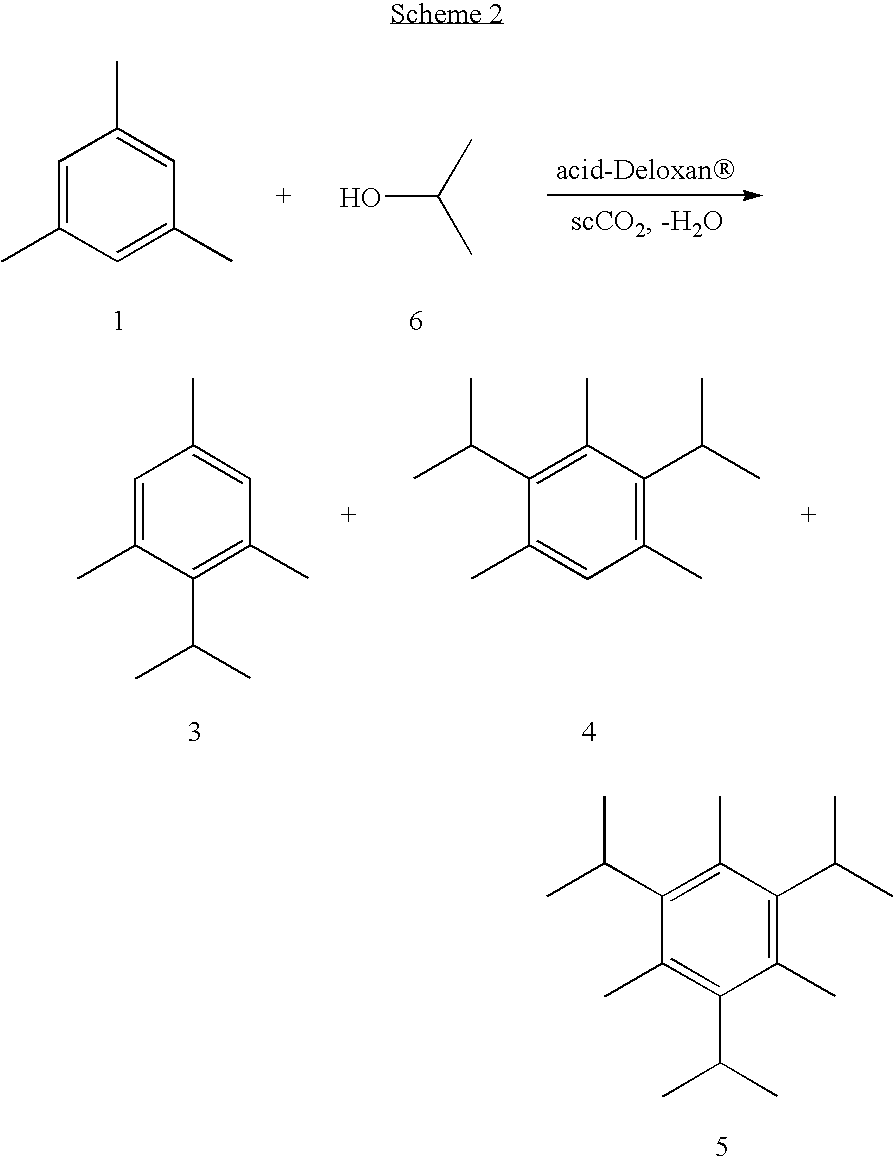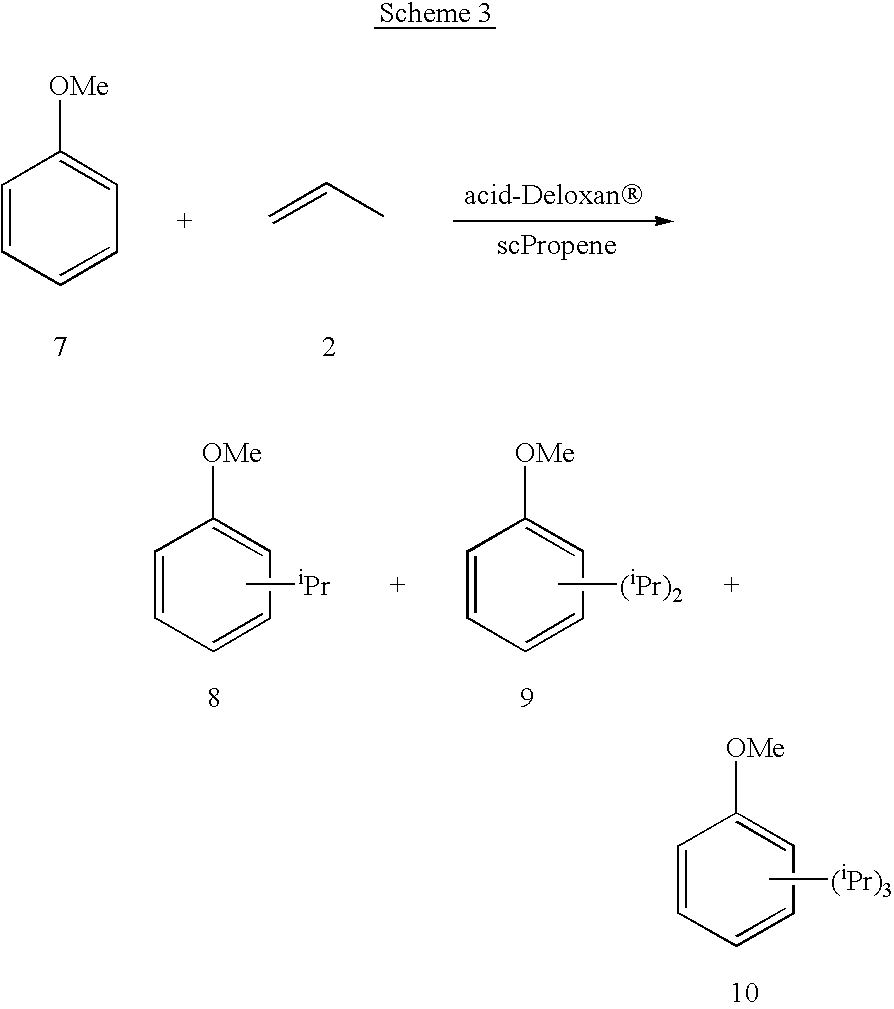Acylation reactions of aromatic substrates
a technology of aromatic substrates and acylation reactions, which is applied in the direction of physical/chemical process catalysts, organic compound/hydride/coordination complex catalysts, supercritical conditions, etc., can solve the problems of waste catalyst sludge disposal, health, safety and environmental problems, and large bulk production problems
- Summary
- Abstract
- Description
- Claims
- Application Information
AI Technical Summary
Benefits of technology
Problems solved by technology
Method used
Image
Examples
example 1
Alkylation Example
Using an apparatus as shown in the drawing, anisole was added at a rate of 0.2 ml / min into propene with a flow rate of 420 ml / min (at standard temperature and pressure). The temperature was adjusted in the mixer to 200.degree. C. and the pressure was set at 165 bar. The resulting mixture was then heated to 200.degree. C. and passed through the reactor containing 3.45 g of catalyst (Deloxan.RTM. ASP 1 / 7). The reactor outflow was then depressurised and the resulting products analysed.
Conversion of anisole to monoalkyl derivative proceeded in 38% yield.
example 2
Friedel Craft Acylation Example
Using an apparatus as shown in the drawing, anisole and acetic acid (molar ratio of 1:2) were premixed and passed (2 ml / min) into the CO.sub.2 stream (flow rate 190 ml / min at standard temperature and pressure). The mixture was then preheated to 200.degree. C. before passing through the reactor containing 2.86 g of catalyst (Deloxan.RTM.ASP 1 / 7). The reactor outflow was then depressurised and the resulting products analysed.
Conversion of anisole to monoacyl derivative proceeded in 8% yield.
Further examples using Deloxan acidic catalysts are given in Schemes 1 to 4 and Tables 1 to 4. It should be appreciated that these results are not fully optimised and represent preliminary findings; it is envisaged that higher yields may be achieved by optimising the conditions. ##STR1## ##STR2## ##STR3## ##STR4##
TABLE 2
TABLE 3
TABLE 4
PUM
| Property | Measurement | Unit |
|---|---|---|
| temperature | aaaaa | aaaaa |
| pressures | aaaaa | aaaaa |
| pressure | aaaaa | aaaaa |
Abstract
Description
Claims
Application Information
 Login to View More
Login to View More - R&D
- Intellectual Property
- Life Sciences
- Materials
- Tech Scout
- Unparalleled Data Quality
- Higher Quality Content
- 60% Fewer Hallucinations
Browse by: Latest US Patents, China's latest patents, Technical Efficacy Thesaurus, Application Domain, Technology Topic, Popular Technical Reports.
© 2025 PatSnap. All rights reserved.Legal|Privacy policy|Modern Slavery Act Transparency Statement|Sitemap|About US| Contact US: help@patsnap.com



